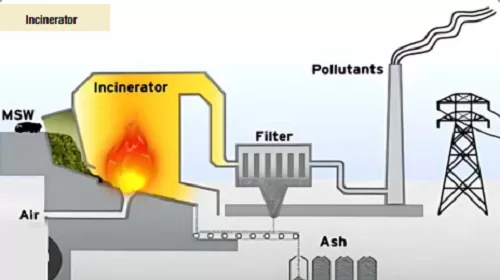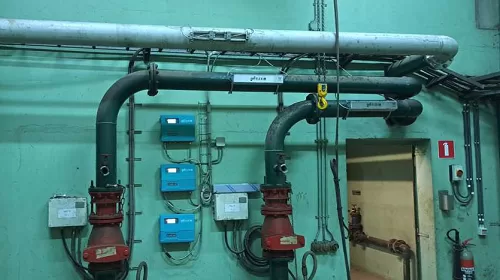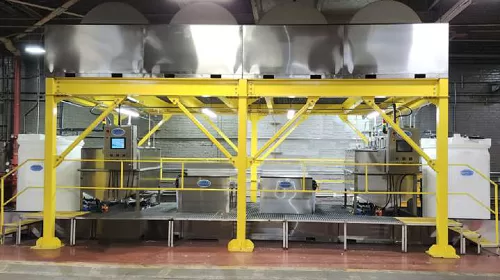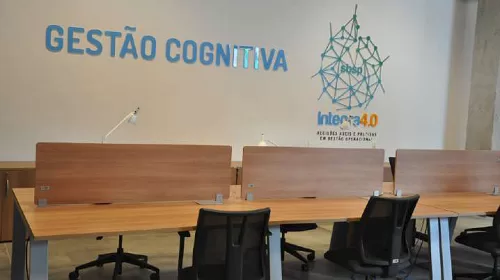Municipal solid waste, commonly known as trash or garbage, consists of everyday items discarded by households, businesses, and institutions. By definition, it includes waste from various sources such as domestic wastes, commercial establishments, institutions, industries, and construction. It typically includes the following with varying proportions depending on the location, socioeconomic factors, and consumption patterns of the society:
Organic Waste: Food scraps, garden trimmings, and other biodegradable materials.
Recyclables: Paper, cardboard, plastics, metals, and glass.
Hazardous Waste: Batteries, electronic waste (e-waste), and chemicals.
Inert Waste: Construction debris and other non-biodegradable materials.
The waste generation has seen a substantial rise over time, primarily due to population expansion, urban development, rapid industrialization and ever increasing consumption. Municipal solid waste (MSW) management is, hence, a significant environmental concern in developing countries because inadequate waste management systems lead to environmental pollution, health hazards, and economic losses. These issues are exacerbated by the lack of reliable waste collection services, limited source separation of waste types, and reliance on unmanaged landfills and open dumps for disposal. These ways of disposal create vast, toxic mountains of wastes that pollute the air, contaminate the water, endanger public health, and hasten climate change.
INTERESTING BUT ALARMING STATISTICS
With an average of 0.74 kilograms of waste per person per day, the worldwide annual waste production is amounting to approx 2 billion metric tons as per estimate made in year 2016.
The developed and high-income countries harbouring 16% population of the world contributes to 34% of the world’s waste. Waste composition differs across income levels reflecting varied patterns of consumption. High-income countries generate relatively less food and green waste, and generate more dry waste that could be recycled, including plastic, paper, cardboard, metal, and glass. Middle and low-income countries generate higher food and green waste, amounting more than half proportion of total waste.
World Bank has anticipated 70% increase in global waste production by 2050, which projects the figure of waste generation to rise to 3.4 billion metric tons. A significant portion of the rise is originating from developing nations – with most getting generated in Asia, followed by Europe, Africa, and North America. Municipal Solid Waste is responsible for 20 percent of the world’s human-related methane emissions.
And, at a potency 80 times that of carbon dioxide, these emissions will continue to wreak environmental and economic havoc if left unchecked.
The proliferation of plastic waste — discarded bottles, bags, containers of all sorts — is responsible for the majority of debris found in rivers and oceans, causing serious risks to marine life and coastal livelihoods. According to UNESCO, plastic debris kills more than 1 million seabirds every year, as well as more than 100,000 marine mammals.
In 2021-22, India generated over 1.7 lakh metric of municipal solid waste per day. Central Pollution Control Board (CPCB) reported collection efficiency of 95.4% of the total generated waste. It is also reported that approx. 50% of the waste is treated, 18% land filled and 32% is unaccounted. Maharashtra, UP, Delhi and Gujarat are leading waste generating states in that order.
Globally, Canada was a leading country in the list of waste generation per capita, according to estimate of year 2019. It was followed by countries like Bulgaria and USA. In terms of plastic waste, USA was the largest producer in 2019 with a figure of 73 million tonnes, which was followed by China having generated 65 million tonnes. These two countries constituted almost 40% of the global plastic waste. Asia dominated in E-waste generation in year 2022.Food waste has often been thought to be concentrated in wealthier countries. However, China and India produced more household food waste in year 2020 than any other country worldwide, at an estimated 92 million and 69 million metric tons, respectively.
HANDLING OF WASTE IN DEVELOPING COUNTRIES AND AFTER EFFECTS
Most of the municipal solid waste in developing countries is dumped on land in a more or less uncontrolled manner. These dumps make very uneconomical use of the available space, allow free access to waste pickers, animals and flies and often produce unpleasant and hazardous smoke from slow[1]burning fires. Because of insufficient collection and disposal infrastructure, a significant portion of the solid waste is either incinerated or deposited in uncovered areas, contaminating the atmosphere, water, and soil. The buildup of refuse in public spaces results in an increase in disease-carrying insects and rodents, which contribute to transmitting diseases such as dengue fever and cholera. The unregulated burning of waste leads to environmental contamination, the spread of disease, and the generation of methane, which contributes to climate change. Uncontrolled disposal in open spaces near water bodies corresponds to public health issues. All these actions consolidate into visual impacts on environment, air contamination, odours, green-house gases emission, vectors of diseases, surface water and groundwater pollution, etc.
WASTE MANAGEMENT
The most effective way to solve the problem of solid waste is by reducing the waste in the first place i.e. stopping waste before it happens. First priority should be the source reduction. The second option is Recycling and Composting. Disposal in the landfills should be the last option. Generally waste management methods include source reduction and reuse, recycling, composting, vermiculture, engineered landfills, incineration, pyrolysis, gasification and land application. A combination of these methods is often necessary to achieve sustainable waste management.
Waste Minimization: The easier method of waste management is to reduce creation of waste materials thereby reducing the amount of waste. Waste reduction, prevention or minimization means reducing waste by not producing it. Waste minimization is defined as activities to reduce the amount of material in products and packaging before that material enters the municipal solid waste management system. It can be done through recycling the items instead of buying new one, avoiding use of disposable products like plastic bags, reusing second hand items, and buying eco-friendly items.
Waste Recycling: Recycling is the process of converting waste products into new usable products to prevent energy usage and consumption of fresh raw materials. The idea behind recycling is to reduce energy consumption, manufacturing cost, volume of landfills, air and water pollution, greenhouse gas emissions and preserve natural resources for future use and sustainable development. Paper, plastic, aluminium, glass etc. are commonly recyclable materials.
Composting: The conversion of waste material into humus is known as composting. It is an easy and natural bio-degradation process, in which the organic waste, under controlled conditions, turns into nutrient rich food i.e. humus, which acts as an organic fertilizer for the plants and soil, thus reducing the needs of fertilizers and pesticides. Composting is one of the best methods of waste disposal as it can turn unsafe organic products into safe compost. It is a slow process and takes a lot of space. Community composting initiatives and home composting kits empower individuals and neighbourhoods to manage organic waste locally. The composting process is becoming increasingly popular in waste disposal, as it also simplifies the separation of recyclable materials. This method is the best option for soil remediation and restoring soil nutritional content. Challenge to composting is requirement of segregation of organic waste at the source and its limited scalability in urban areas.
Vermiculture: Organic waste is decomposed with the help of Earthworms (burrowing type). They produce very useful organic manure known as Vermicast, which contains earthworm excreta. Vermiculture is a simple, cheap and appropriate biotechnology to degrade the organic waste.
Waste to Energy: Waste-to-Energy, also widely recognized by its acronym ‘WtE’ is the generation of energy in the form of heat or electricity from waste. This process involves conversion of non-recyclable waste items into useable heat, electricity, or fuel through a variety of processes. It can also help to reduce carbon emissions by offsetting the need for energy from fossil sources.
Use of sewage-sludge- and food-waste-based biochar as an alternatives and supplementary fuel in coal-fired power plants is a WtE process. Coal-fired power plants play a significant role in global primary energy consumption. Nevertheless, coal combustion is also a notable source of air pollution. Biomass co-firing in coal-fired power plants is an effective strategy to reduce CO2 emissions into the atmosphere. In order to mitigate the air pollution, the co-combustion of biomass such as agricultural residues, algae, wood processing residues, sewage sludge, food waste etc. is done along with coal. Sewage sludge, while a potential option, faces challenges due to its high concentration of heavy metals, which can contribute to atmospheric pollution.
Landfill: The use of landfills represents the simplest, cheapest, and most common way to manage the disposal of municipal solid waste. However, it is the least environmentally friendly approach to waste disposal. The use of landfills compromises the efficiency of waste disposal and can lead to serious issues such as groundwater contamination and air pollution due to the release of harmful gases from landfills, as well as soil contamination. Open dumping of solid waste, not only contaminates groundwater and degrades the soil, but also attracts disease carrying rats and insects as well as catches fire sometime. Properly designed, constructed and managed engineered landfill is the best alternate to the open dumping. Engineered landfill has an earthen or synthetic layer to protect the groundwater contamination from leachate. It has a gas capture system to vent, burn, or collect methane. The selection of the landfill site is a relevant and necessary issue for waste management. It is an extremely complex task as it must take into account various environmental, economic, and socio-political criteria that need to comply with stringent regulations. The arbitrary and non-scientifically based selection of sites for solid waste disposal implies potential threats to the health of the local population, especially those residing in the vicinity.
Mechanical-Biological Treatment (MBT): This treatment combines mechanical sorting of recyclables and biological treatment like composting or anaerobic digestion of organic waste to reduce landfill volume. It improves resource recovery rates and reduces environmental impact of landfilling. The mechanical element is usually an automated mechanical sorting stage or manual sorting by hand picking. This either removes recyclable elements from a mixed waste stream (such as metals, plastics, glass, and paper) or processes them. The biological treatment is either through anaerobic digestion or composting. Anaerobic digestion harnesses anaerobic microorganisms to break down the biodegradable component of the waste to produce biogas and soil improver. The biogas can be used to generate electricity and heat. In composting, the organic component is broken down by naturally occurring aerobic microorganisms into carbon dioxide and compost.
THERMAL TREATMENT:
There are 3 techniques for managing municipal waste by thermal treatment: (1) Incineration or Combustion, (2) Pyrolysis and (3) Gasification.
Incineration / Combustion: The controlled burning of waste, known as incineration, takes place in specific furnaces designed for this purpose. It is an exothermic, oxidative process that generates heat, carbon dioxide, and water. Municipal solid wastes are burned at high temperature under controlled condition and converted into ash and other gaseous products. It is an effective method for reducing waste volume by up to 95%, but its main disadvantage is the high cost. Incinerators necessitate an initial investment, maintenance, and operation. Although incineration generates electricity, it raises concerns due to the emission of micropollutants during the combustion process. This technology has been identified as environmentally friendly technology.
Gasification: This process takes place in the presence of lesser amount of oxygen than that is required stoichiometrically for complete combustion. The gasification process represents significant advances over incineration. Incineration literally means to render to ash. Incineration uses waste as a fuel, burning it with high volumes of air to form carbon dioxide and heat, whereas gasification converts waste to a usable synthesis gas, or syngas. In this partial oxidation or gasification process, the municipal waste is not just a fuel but a feed stock for high temperature chemical conversion process, by which Hydrogen, Carbon Monoxide and Carbon Dioxide gases are obtained which, in turn, are converted into higher value commercial products such as transportation fuels, chemicals, fertilizers, and even substitute natural gas.
Chemical processing of plastics: Technologies such as chemical recycling break down plastics into their raw materials, enabling the recycling of previously non-recyclable items. These are complementary solutions to existing mechanical recycling to recycle mixed or contaminated plastic waste that otherwise would be incinerated or sent to landfill. While mechanical recycling involves processing plastic waste into products without significantly altering the material’s chemical structure, the chemical recycling converts polymeric waste back into secondary raw materials or recycled feedstocks, reducing the need for virgin fossil resources. Chemical processing changes the structure of the polymeric waste and transforms it into chemical building blocks, including monomers, which can then be used one more time as raw material in chemical processes. Chemical recycling includes processes such as gasification, pyrolysis, and depolymerisation.
E-Waste: E-waste represents a considerable challenge to current management practices. The increase in e-waste is a direct consequence of population growth, which has gained significant attention from governments, industries, the academic community, and civil society organizations, as it is one of the fastest-growing waste streams globally. Proper management of these wastes is crucial, as they contain hazardous substances such as heavy metals, flame retardants, and chlorofluorocarbons, which impact both human health and the environment. Generally adopted disposal methods are landfilling and incineration. However, electronic waste also represents an attractive resource base for urban mining as it contains precious metals of very high value. Recycling of E-waste is a sustainable disposal method, which involves dismantling electronic waste to recover valuable materials and safely manage hazardous components. This process includes the recycling of printed circuit boards, plastics, cathode-ray tubes (CRTs), non-ferrous metals, mobile phones, hard drives, fax machines, wires, and memory chips. Proper recycling reduces the presence of heavy metals and hazardous heavy metals such as mercury, cadmium, beryllium, and lead, minimising the risks to human and animal health and the environment.
LET US FIX THE ISSUE
There are still obstacles that must be addressed to achieve true sustainability in waste management. These challenges include a lack of awareness and education, inadequate infrastructure and limited funding and resources, gaps in policy and regulations, technological limitations, and changing waste compositions influenced by social and behavioural factors. Addressing these challenges requires a comprehensive approach involving education and awareness campaigns, investment in infrastructure and technology, policy reform, and community involvement. By tackling these challenges, we can progress towards sustainable and environmentally friendly waste management.
The flip side of this gloomy scenario is that it is a fixable problem. Unlike other complex climate- and development-related challenges that will require major innovation and technological advances to address, scalable methods to curb waste-generated pollution and methane emissions already exist in practice. These solutions enable energy recovery and a circular approach to production and consumption that emphasizes reuse, recycling, and regeneration to minimize environmental impacts. They also offer the promise of inclusive job creation and business opportunities that can uplift entire communities.
These circular pathways begin with modernizing the waste collection process — increasing the scope and scale of recycling to reclaim materials such as plastics, glass and metals, and organic waste for composting and energy value. This cuts down on what is sent to landfills and yields new income streams for municipalities and waste management companies, which can help offset the cost of asset upgrades. It also gives producers an opportunity to reduce their own carbon emissions by limiting the amount of new raw material and energy.
As there are challenges that limit the widespread adoption of sustainable waste management practices, regulations that support and enforce proper waste collection, recycling, energy recovery, and disposal are vital. Extended producer responsibility (EPR) regulations offer potential for boosting circularity, while reducing the burden on municipal waste management operators.
EPR legislation places responsibility on producers and manufacturers to collect the waste they create — such as plastic packaging — and reuse or recycle it — rather than sending it to landfills.
Like with other essential infrastructure services like electricity and water, there is a need for ensuring that households, businesses, and municipalities pay for managing the waste that they generate. Public-private financing approaches with concessional finance and business models will also be required that extract value and revenue sources from waste. Fixing the world’s waste problem is 100 percent a doable task. But we must come together — public and private sector, governments, regulators, investors, international development institutions, climate activists, and civil society — to elevate the dialogue, spur action, and trigger more investment. By accomplishing these, we will have a far better shot at realizing the dream of a cleaner, greener, and healthier future.
CONCLUSION
Waste management is not a glamorous topic or activity. In fact, even in the international discourse on climate and development, addressing waste has not been high on the agenda. But if we are to succeed at addressing the global climate, pollution, and biodiversity-loss crises, we need to talk more about waste — and do more, globally and locally. The treatment of municipal solid waste is a multifaceted challenge that requires a holistic approach. Combining traditional methods with innovative technologies and fostering community participation is essential for sustainable waste management. By reducing waste generation, enhancing recycling efforts, and investing in advanced treatment technologies, societies can minimize the environmental footprint of municipal solid wastes and move towards a more sustainable future.





